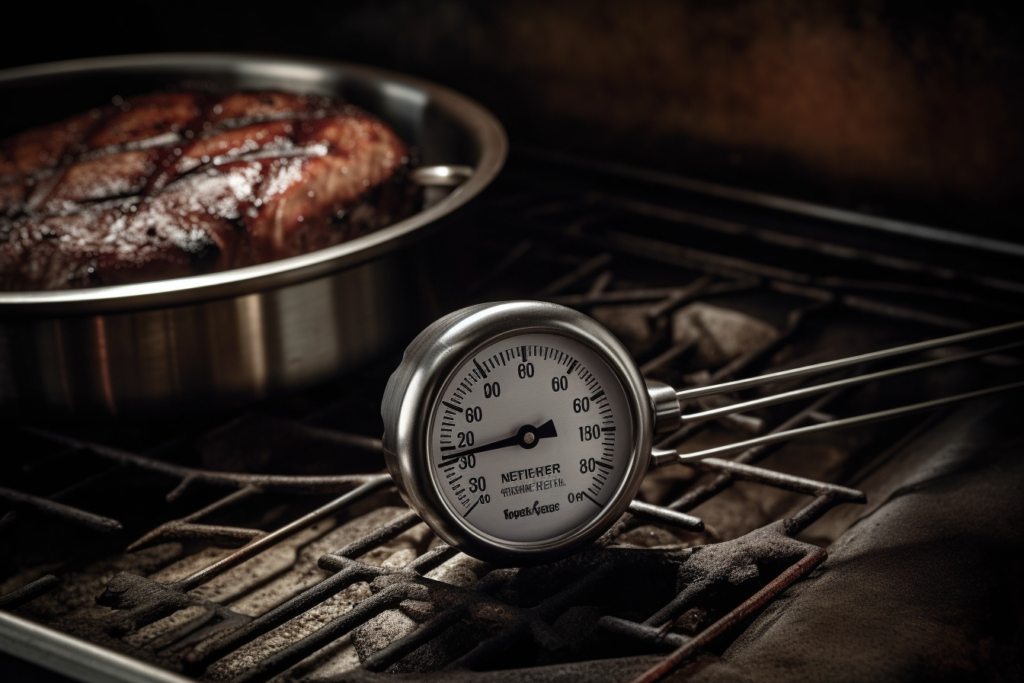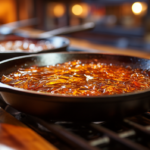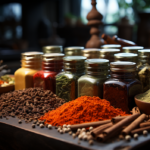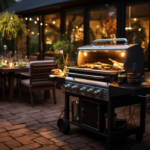Table of Contents
Explore the Benefits of Using a Meat Thermometer for Perfectly Cooked Meat Every Time!
Cooking meat can be a little tricky, isn’t it? You want to make sure it’s cooked thoroughly, but you don’t want it to lose its juices and taste as well. That’s where a meat thermometer comes in handy! It’s a simple yet effective tool that tells you exactly when your meat is cooked to perfection.
In this Meat Thermometer Guide, we’ll give you all the information you need to cook meat safely and deliciously using a thermometer. We’ll cover everything from the types of meat thermometers available to the correct temperature at which different meats should be cooked. You’ll also learn how to calibrate your meat thermometer and find out when to use an instant-read thermometer versus a leave-in thermometer.
Never overcook or undercook your meat again! With this guide, you’ll be able to prepare your meat dishes with confidence and impress your family and friends with your culinary skills.
Types of Meat Thermometers: Pros and Cons of Each Type
Meat thermometers come in different types, each with its own pros and cons. Choosing the right one is important to ensure that you cook meat safely and deliciously. Here are the different types of meat thermometers, their advantages, and disadvantages:
Instant-Read Thermometers
Instant-read thermometers are the most common type of meat thermometer. They are simple to use and give you quick temperature readings. They are designed to be inserted into the meat at the thickest part to get an accurate temperature reading. Some models come with digital displays, while others use analog dials.
Pros:
- Quick and easy temperature readings
- Affordable
- Portable and compact
Cons:
- Less accurate than other types
- Not ideal for measuring temperature over time
Leave-In Thermometers
Leave-in thermometers, also known as oven-safe thermometers, have a probe that you insert into the meat before you begin cooking. The probe remains in the meat while it cooks, so you can monitor the temperature as it cooks. Some models have an alarm that rings when the meat reaches the desired temperature.
Pros:
- Accurate temperature readings
- Ideal for monitoring temperature over time
- Some models come with an alarm
Cons:
- Can be expensive
- May require calibration
- Inserted into meat during cooking
Wireless Thermometers
Wireless thermometers come with a transmitter and a receiver. You insert the probe into the meat and set the transmitter on the side of the grill or oven. As the meat cooks, the transmitter sends the temperature readings to the receiver, so you can monitor the temperature without opening the oven or grill.
Pros:
- Ideal for monitoring temperature without having to open the oven or grill
- Some models come with multiple probes
Cons:
- Can be expensive
- Probe may require calibration
- Battery life may be short
Infrared Thermometers
Infrared thermometers work by measuring the temperature of the surface of the meat instead of the internal temperature. They are ideal for checking the temperature of the grill or oven where you are cooking the meat.
Pros:
- Quick and easy to use
- Non-invasive
- Ideal for measuring grill or oven temperature
Cons:
- Not ideal for measuring internal temperature of meat
- Can be expensive
- May require calibration
In conclusion, choosing the right meat thermometer is essential for cooking meat safely and deliciously. Consider factors such as accuracy, price, and the features you need when choosing a meat thermometer.
Proper Temperature for Cooking Different Types of Meat
Cooking meat at the right temperature is crucial for safety and flavor. Here are the recommended temperatures for cooking various types of meat:
Beef
For beef, the recommended cooking temperature depends on the cut of meat:
- Medium-rare: 130-135°F
- Medium: 135-145°F
- Well done: 145°F or higher
Pork
Pork should always be cooked thoroughly to ensure it’s safe to eat. The recommended temperature for pork is 145°F.
Chicken
Chicken should also be cooked thoroughly to avoid foodborne illness. The recommended internal temperature for chicken is 165°F.
Turkey
For turkey, the recommended internal temperature is 165°F. Be sure to check the temperature in several places, including the thickest part of the breast and the innermost part of the thigh.
Fish
Fish should be cooked until opaque and flakes easily with a fork. The recommended temperature for fish is 145°F.
Ground Meat
Ground meat, such as beef and pork, should be cooked thoroughly to prevent foodborne illness. The recommended internal temperature for ground meat is 160°F.
Properly cooking meat is essential for food safety. The best way to ensure that your meat is cooked to the right temperature is to use a meat thermometer. Insert the thermometer into the thickest part of the meat to get an accurate temperature reading. Always clean your thermometer with hot, soapy water between uses to prevent cross-contamination. Remember, it’s better to be safe than sorry!
How to Calibrate Your Meat Thermometer for Accurate Readings
Calibrating your meat thermometer is essential to ensure that it gives accurate temperature readings. Here are the steps to calibrate your thermometer:
Ice Water Method
The ice water method is the most common method for calibrating a meat thermometer. Here’s how to do it:
- Fill a large glass with ice cubes.
- Add water to the glass until it’s full.
- Insert the thermometer probe into the ice water, making sure it doesn’t touch the sides or bottom of the glass.
- Wait for the thermometer to stabilize. It should read 32°F.
- If the thermometer doesn’t read 32°F, adjust it using the calibration nut or screw.
Boiling Water Method
The boiling water method is another way to calibrate your thermometer. Here are the steps:
- Bring a pot of water to a rolling boil.
- Insert the thermometer probe into the boiling water, making sure it doesn’t touch the sides or bottom of the pot.
- Wait for the thermometer to stabilize. It should read 212°F at sea level.
- If the thermometer doesn’t read 212°F, adjust it using the calibration nut or screw.
Note: If you live at a high altitude, the boiling point of water is lower than 212°F. Use a thermometer to determine the boiling point of water in your area, and adjust your meat thermometer accordingly.
Calibration Nut or Screw
To adjust the calibration on your meat thermometer, look for a nut or screw on the back of the thermometer. You may need a wrench or a screwdriver to make the adjustment. Follow the manufacturer’s instructions for making the adjustment.
In conclusion, calibrating your meat thermometer is essential to ensure that you get accurate temperature readings. Use the ice water method or boiling water method to calibrate your thermometer, and adjust it using the calibration nut or screw if necessary. With a properly calibrated meat thermometer, you can cook meat safely and deliciously every time!
Conclusion
In conclusion, using a meat thermometer is the best way to ensure that you cook meat safely and deliciously. Whether you’re cooking beef, pork, chicken, turkey, fish, or ground meat, the recommended temperature is essential for food safety. With a thermometer, you can quickly and easily check the temperature of your meat and adjust your cooking time accordingly.
Calibrating your meat thermometer is also crucial to ensure that you get accurate temperature readings. Use the ice water method or boiling water method to calibrate your thermometer, and adjust it if necessary. With a properly calibrated meat thermometer, you can be confident that your meat is cooked thoroughly and safely.
Remember, cooking meat is an art and science that takes practice to master. But with the right tools and knowledge, you can prepare meat dishes that are not only safe to eat but also incredibly delicious. So, get yourself a meat thermometer and start experimenting with different cuts and cooking methods!









